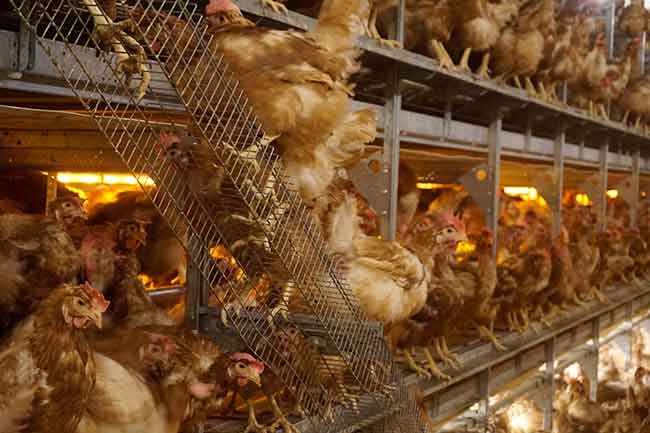
Optimal feed structure for pullets
By Nerine T. Joseph Ph.D. Livestock Research Innovation Corporation
Features Layers Production Nutrition Poultry Production Poultry ResearchUniversity of Guelph research will explore nutritional means to improve gut health and function, skeletal integrity and feed utilization in pullets and layers.
 Stimulating gut development may be particularly strategic for alternative housing where the birds may have increased nutrient requirements over and above normal maintenance. New-Life Mills.
Stimulating gut development may be particularly strategic for alternative housing where the birds may have increased nutrient requirements over and above normal maintenance. New-Life Mills.Dr. Elijah Kiarie is a newly appointed Assistant Professor in the Department of Animal Bio–sciences at the University of Guelph. Dr. Kiarie has recently secured partial funding for two research projects and will be investigating the optimal feed structure for pullets. His research will be designed to investigate optimal feed structure (by using oat hulls and limestone particle size) for enhanced gut and skeletal development in pullets and subsequent effects on egg production, hen bone health and integrity and livability.
Oat hulls
Modern layer diets have been refined to improve intake and efficiency. The implications of these strategies are diets with low fiber and overall structure. Poultry require a certain amount of fiber for optimal development and physiology of the gastrointestinal tract. Low fiber diets have negative consequences on the development and functioning of the gut, particularly the gizzard. Addition of insoluble fiber could be a practical solution of increasing diet structure.
In an interview, Dr. Kiarie explained the problem at hand. “It remains unknown whether it is beneficial to introduce fiber at the rearing phase or laying phase, or indeed both phases,” he said.
“Modern pullets have a propensity to reduce intake at the onset of lay. Stimulation of gut development at the pullet phase may lead to birds with improved appetite for satisfactory laying phase performance,” he said. “This may be particularly strategic for alternative housing where the birds may have increased nutrient requirements over and above normal maintenance and
still meeting the requirements for egg production.”
Diets will be designed with oat hulls to create feed structure and fed to pullets throughout the grow-out period. During the laying phase, birds will be maintained on diets with or without the addition of oat hull. Gut and skeletal development will be evaluated during the grow-out phase and egg production and quality will be measured during the laying phase.
Limestone particle size
Proper skeletal development is essential for high levels of egg production in all poultry housing systems.
“Studies to improve skeletal health often focus on manipulating the birds’ environment and nutrition during the layer phase. Unfortunately, at this phase it might already be too late to improve bone quality,” Dr. Kiarie explained. “Earlier interventions by stimulating bone development at pullet stage could lead to a bird with sound skeletal structure for satisfactory laying phase performance in alternative housing.”
“Pullets undergo fast bone formation during rearing, and nutritional strategies during this phase could have a major impact on bone quality and skeletal integrity of hens,” he added.
The proposed research will evaluate the effect of limestone particle size on pullet skeletal development and subsequent effects on layer performance, bone health and integrity in hens housed in conventional and furnished cages.
Dr. Kiarie said the limestone particle size will be used as a method of manipulating the calcium supply form to create feed structure. Diets differing in limestone particle sizes will be formulated and fed to pullets throughout the grow-out period. During the laying phase, bird diets will be maintained in conventional and furnished cage housing systems. Skeletal development will be evaluated during the grow-out phase. Egg production and quality and bone health and integrity will be measured during the laying phase.
“The long term objective is to explore nutritional means to improve gut health and function, skeletal integrity and feed utilization in pullets and layers,” said Dr. Kiarie in describing the anticipated outcomes of these studies. “Research results will be directly transferred into practice through partnerships with feed manufacturers and allied industries that serve the Canadian egg producers.”
Components of this research will be funded by the Egg Farmers of Ontario, Egg Farmers of Canada, and the Canadian Poultry Research Council.
Print this page